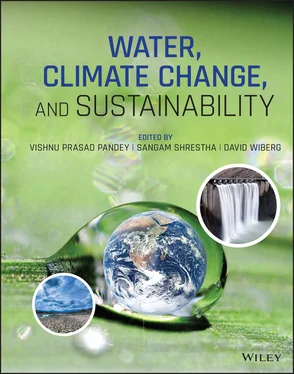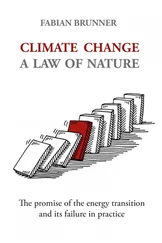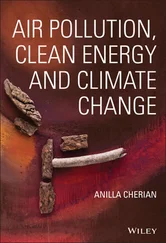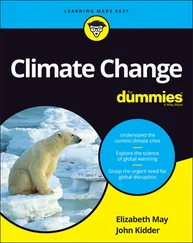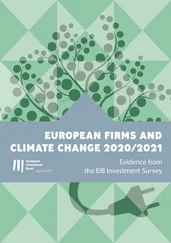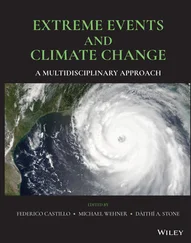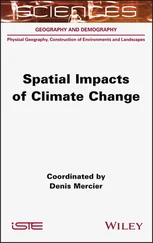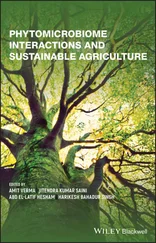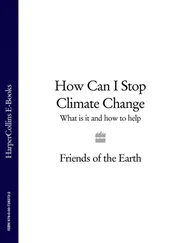Ram Chandra KhanalFarmer Managed Irrigation Systems Promotion Trust, Lalitpur, Nepal
Chayanis KrittasudthacheewaAsia Regional Office, Stockholm Environment Institute, Faculty of Political Science, Chulalongkorn University, Bangkok, Thailand
Himanshu KulkarniAdvanced Center for Water Resources Development and Management (ACWADAM), Karve Nagar, Pune, India
Qinqin LiuDepartment of Water Resources, Natural Resources Agency, Sacramento, California, USA
Vidya MandaveIndia Office, International Water Management Institute, New Delhi, India
Karthikeyan MatheswaranAsia Regional Office, Stockholm Environment Institute, Faculty of Political Science, Chulalongkorn University, Bangkok, Thailand
Ian McIndoeAqualinc Research Limited, Christchurch, New Zealand
Magdy MohssenOtago Regional Council, Dunedin, New Zealand
Seyed Hashem Mousavi‐AvvalDepartment of Food, Agricultural and Biological Engineering, The Ohio State University, Wooster, OH, USA
Olusola O. OloladeCentre for Environmental Management, University of the Free State, Bloemfontein, South Africa
Vishnu Prasad PandeyNepal Office, International Water Management Institute, Lalitpur, NepalDepartment of Civil Engineering, Pulchowk Campus, Institute of Engineering, Tribhunva University, Nepal
Mayowa Abiodun Peter‐CookeyResearch and Development Department, EarthWatch Research Institute, Port Harcourt, Nigeria
Thanapon PimanAsia Regional Office, Stockholm Environment Institute, Faculty of Political Science, Chulalongkorn University, Bangkok, Thailand
Orn‐Uma PolapanichAsia Regional Office, Stockholm Environment Institute, Faculty of Political Science, Chulalongkorn University, Bangkok, Thailand
Prachanda PradhanFarmer Managed Irrigation Systems Promotion Trust, Lalitpur, Nepal
Soni M. PradhanangDepartment of Geosciences, University of Rhode Island, USA
Krishna PrasadIrrigation and Water Resources Management Consultant, Janakpur, Nepal
Channa RajanayakaNational Institute of Water and Atmospheric Research, Christchurch, New Zealand
Helen RutterAqualinc Research Limited, Christchurch, New Zealand
Bart SchultzLand and Water Development IHE Delft, Delft, The Netherlands
Ajay ShahDepartment of Food, Agricultural and Biological Engineering, The Ohio State University, Wooster, OH, USA
Lovlesh SharmaSector Coordinator for Infrastructure, National Institute of Urban Affairs, New Delhi, India.
Navneet SharmaIndia Office, International Water Management Institute, New Delhi, India
Victor R. ShindeSector Coordinator for Water and Environment, National Institute of Urban Affairs, New Delhi, India
Binaya Raj ShivakotiNatural Resources and Ecosystem Services Unit, Institute for Global Environmental Strategy, Hayama, Japan
Manish ShresthaAsia Regional Office, Stockholm Environment Institute, Faculty of Political Science, Chulalongkorn University, Bangkok, Thailand
Sangam ShresthaDepartment of Civil and Infrastructure Engineering, Asian Institute of Technology, Pathumthani, Thailand
Mohammad Imran SiddiqueAdvanced Center for Water Resources Development and Management (ACWADAM), Karve Nagar, Pune, India
Alok SikkaIndia Office, International Water Management Institute, New Delhi, India
Muhammad Naveed TahirAsian Institute of Technology (AIT), Bangkok, Thailand
Laura van de LandeIRC, The Hague, The Netherlands
Juliana Vasco‐CorreaDepartment of Food, Agricultural and Biological Engineering, The Ohio State University, Wooster, OH, USA
David WibergHydro‐informatics Group, International Water Management Institute, Colombo, Sri Lanka
Hafiz Qaisar YasinDirectorate General Agriculture (Water Management), Agriculture Department, Lahore, Pakistan
Water is vital for sustainable development. Water is a finite and vulnerable resource and basic need of humanity. However, the availability and supply of water is threatened by recent global change such as rapid population growth, land use/cover changes, pollution, damming of rivers including climate variability and change. Climate variability and change exacerbate the existing pressures in water resources management affecting the secure supply to all production processes and human health. Securing the reliable water supply needs an understanding of the linkage among water, climate and various dimensions of sustainability. Therefore, the purpose of this book is to provide the reader in‐depth understanding on the concept of sustainability as it relates to water resources management in the face of climate change risks. The book consists of sixteen chapters contributed by the global authors and presented in three sections namely: Sustainability Concepts; Sustainability Approaches, Tools, and Techniques; and Sustainability in Practice. Chapters in “Sustainability Concepts” provide the readers linage between water and sustainable development. Chapters in “Sustainability Approaches, Tools, and Techniques” highlights the importance of development and use of new approaches, tools and techniques for measuring and reporting its effectiveness. Similarly, the chapters in “Sustainability in Practice” display the case studies to implement sustainability concepts in various beneficial water use sectors and scale. The book is intended to advance the understanding and knowledge of water managers, scientists and policy makers for the sustainable development and management of water resources in the context of climate change.
Vishnu Prasad PandeySangam ShresthaDavid Wiberg
Section I Sustainability Concepts
1 Localizing and Mainstreaming Global Initiatives on Water, Climate Change and Sustainable Development
Vishnu Prasad Pandey1,5, Binaya Raj Shivakoti2, Sangam Shrestha3, and David Wiberg4
1 Nepal Office, International Water Management Institute, Lalitpur, Nepal
2 Natural Resources and Ecosystem Services Unit, Institute for Global Environmental Strategies, Hayama, Japan
3 Department of Civil and Infrastructure Engineering, Asian Institute of Technology, Pathumthani, Thailand
4 Hydro‐informatics Group, International Water Management Institute, Colombo, Sri Lanka
5 Department of Civil Engineering, Pulchowk Campus, Institute of Engineering, Tribhunva University, Nepal
Various drivers such as population growth, land use/cover change, unsustainable consumption pattern, and climate change are putting pressure on limited resources available within our planetary boundaries, thus, raising concerns on their sustainability. Coordinated actions at levels ranging from global to local are required to ensure sustainability goals are achieved. A large number of global initiatives exists at global level to address sustainability challenges. They have direct or indirect links with water and climate. Sustainable Development Goals (SDGs) and Paris Climate Agreement (PCA) are the two recent initiatives agreed around five years ago by the global community. Since then, various efforts have been taken to transfer these global aspirations into practice. Localizing and mainstreaming these global goals have become indispensable to ensure effective implementation in the remaining 10 years, though countries are facing challenges with it. This chapter sheds light on sustainability challenges and global initiatives in general, and water and climate change in particular; discusses how water and climate change have evolved as global agendas; and then sheds light on formulation and governance of the SDGs, including the link of SDG6 (i.e. clean water and sanitation) with other 16 SDGs. Finally, considerations for achieving the SDGs and challenges and opportunities associated with localizing the global initiatives such as SDGs and PCA are discussed. The considerations include advancing science, technology, and innovations; making coherent policies and programs across the sectors; investment in technology and data to drive improvements; promoting science‐policy interface; and building/strengthening both institutional and human capacities.
Читать дальше
